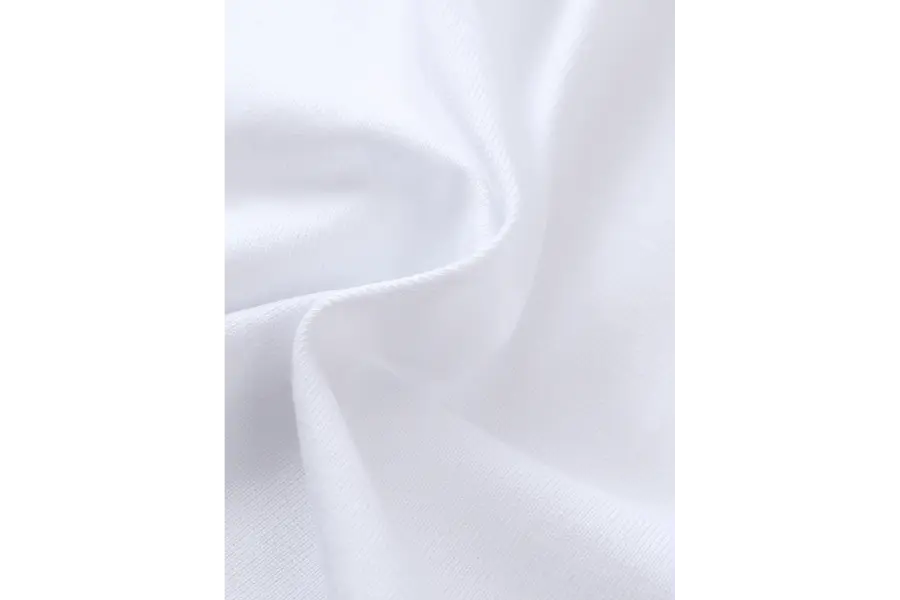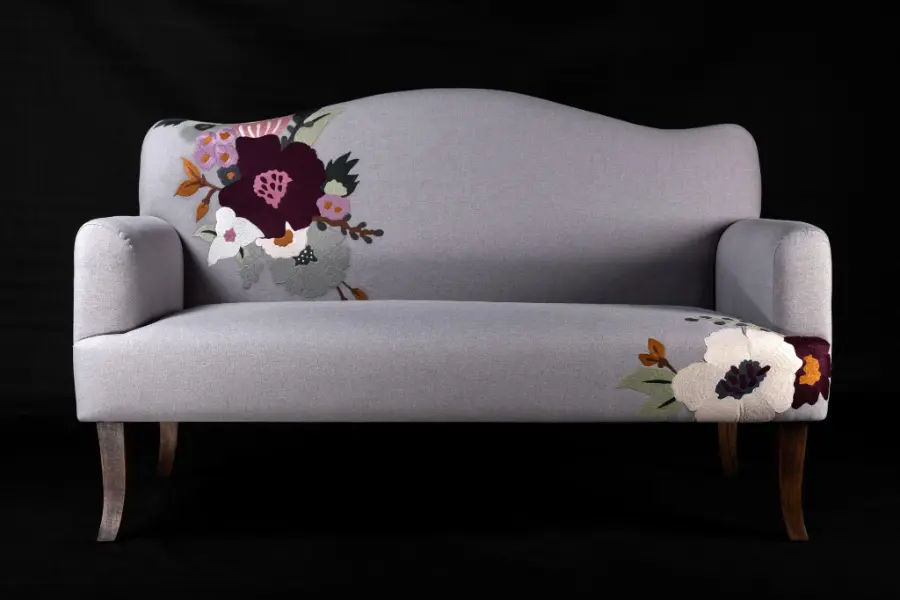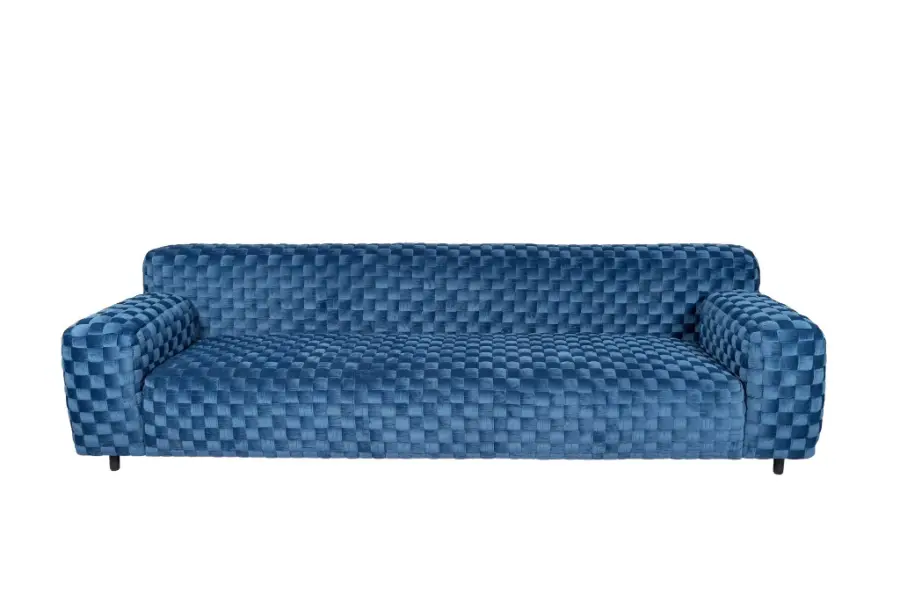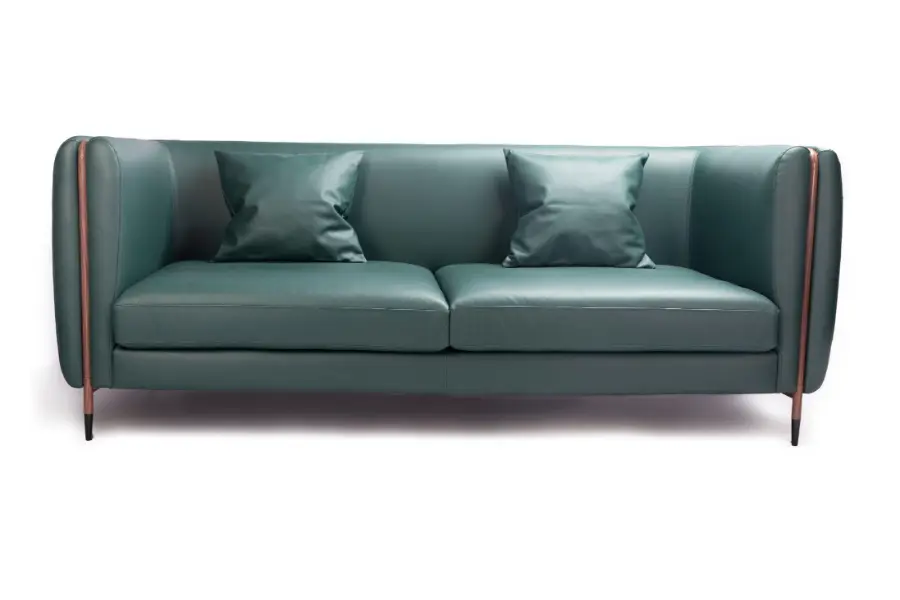What Upholstery Can You Use For a Sofa
When it comes to choosing the perfect sofa for your home, one of the most critical factors to consider is the material it’s made from. The material not only determines the aesthetics but also plays a significant role in the sofa’s comfort, durability, and overall quality. In this blog post, we’ll delve into the various materials used in crafting sofas to help you make an informed decision for your custom furniture purchase:
1. Fabric Upholstery:
Fabric upholstery is a popular choice for sofas, offering a wide range of options in terms of colors, patterns, and textures. Common fabric materials used for sofas include:
A. Cotton: Cotton is a breathable and soft material that’s easy to clean. It’s an excellent choice for casual and comfortable sofas.

B. Linen: Linen has a natural, slightly textured look and is known for its breathability. However, it can wrinkle easily and may require more maintenance.

C. Polyester: Polyester fabrics are durable, stain-resistant, and available in various textures. They are a practical choice for families with children and pets.

D. Velvet: Velvet sofas exude luxury and elegance sofa design. They are soft and cozy but may require special care to maintain their appearance.

2. Leather Upholstery:
Leather sofas are timeless and known for their durability and classic appeal. Genuine Leather is the highest quality leather, featuring a natural look and feel. It’s incredibly durable and develops a beautiful patina over time.
3. Synthetic Materials:
Some sofas use synthetic materials, such as vegan leather, which mimic the look and feel of genuine leather but are more affordable. These materials can be a great compromise if you’re looking for the leather aesthetic without the high cost.

Conclusion
Choosing the right material for your sofa is a crucial step in creating the perfect piece of furniture. Consider your lifestyle, preferences, and budget when making your decision. Whether you opt for fabric, leather, synthetic materials, or a combination, selecting the right material ensures your sofa will be a comfortable and stylish addition to your home for years to come.
Hope We Have Cleared Your Doubts About These FAQs
There is no one-size-fits-all answer to which fabric you should use for a sofa. Your choice should be based on your specific needs and preferences, taking into account factors like durability, comfort, maintenance, and aesthetics. It’s often a good idea to visit a furniture store and touch and feel different fabrics to get a sense of what works best for you.
If you prioritize durability, a luxurious look, and easy maintenance, leather may be the better choice. On the other hand, if you prefer a wider range of design options, a softer feel, and a more budget-friendly option, fabric upholstery might be the better fit for you.
Maintaining the fabric of your sofa is essential to ensure its longevity and keep it looking clean and attractive. Here are some tips on how to maintain fabric upholstery on your sofa:
Regular Vacuuming: Dust, dirt, and debris can accumulate on your sofa’s fabric, so vacuum it regularly. Use a soft brush attachment to prevent damage to the fabric. Vacuum both the seat cushions and the crevices between them.
Flip and Rotate Cushions: To ensure even wear, flip and rotate the seat and back cushions regularly. This helps prevent one side from becoming more worn or compressed than the other.
Clean Spills Promptly: Accidents happen, so it’s essential to clean spills and stains as soon as they occur. Blot the stain gently with a clean, absorbent cloth or paper towel to soak up as much of the liquid as possible. Avoid rubbing, as this can spread the stain.
Spot Cleaning: For specific stains, consult the care label on your sofa for recommended cleaning instructions. Some fabrics can be cleaned with a mild detergent and water, while others may require a specialized fabric cleaner. Always test any cleaning solution on an inconspicuous area of the fabric first to ensure it doesn’t damage or discolor it.
Professional Cleaning: Consider having your sofa professionally cleaned every 12 to 24 months, depending on use. Professional cleaners can deep clean and remove embedded dirt and stains effectively.
Remember that different types of fabric may have specific care instructions, so always check the care label provided by the manufacturer. Following these maintenance tips can help extend the life of your fabric sofa and keep it looking its best.

